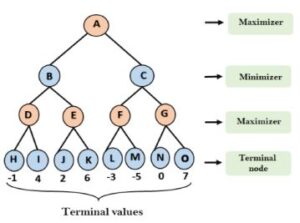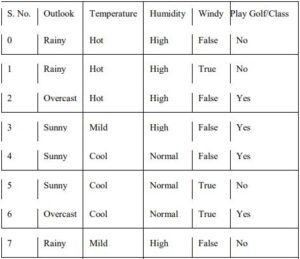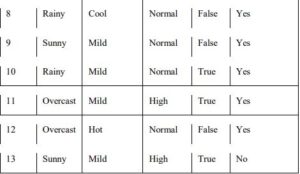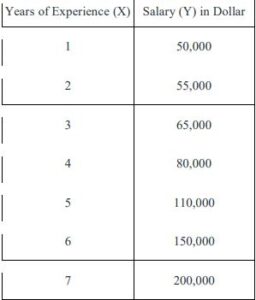PLEASE MATCH YOUR ASSIGNMENT QUESTIONS ACCORDING TO YOUR SESSION
IGNOU MCS-224 (January 2025 – July 2025) Assignment Questions
Q1: Compare ANI, AGI and ASI, in context of AI. Also, discuss the major applications of AI.
Q2: What is Turing Test? What is the Criticism to the Turing Test?
Q3: Compare Artificial Intelligence (AI), Machine Learning (ML), and Deep Learning (DL).
Q4: What are Intelligent agents in AI? Briefly discuss the properties of Agents.
Q5: Find the minimum cost path for the 8-puzzle problem, where the start and goal state are given as follows:
Q6: Consider the following Minimax game tree search in which root is maximizing node and children are visited from left to right. Find the value of the root node of the game tree?
Q7: Define a frame for the entity date which consists of day, month and year. each of which is a number with restrictions which are well-known. Also, a procedure named compute-day-of-week is already defined.
Q8: In a class, three students tossed one coins (one each) for 3 times. Write down all the possible outcomes which can be obtained in this experiment. What is the probability of getting 2 or more than 2 heads at a time? Also find the probability of getting three tails at a time.
Q9: Briefly discuss the various Ensemble Methods.
Q10: Explain K-Nearest Neighbour (K-NN) classification algorithm with the help of a suitable example
Q11: Using the following training dataset, apply Naïve Bayes classification algorithm to find the class of an unknown sample X = < Rainy, Cool, High, False >
Q12: Explain working of SVM algorithm with the help of a suitable example.
Q13: Consider the following set of data points (Year of experience salary). Find the 2nd order polynomial y=𝑎0 + 𝑎1𝑥i + 𝑎2 𝑥i2, and using polynomial regression determine the salary when year of experience is 10.
Q14: Write Back Propagation algorithm, and showcase its execution on a neural network of your choice (make suitable assumptions if any)
Q15: Consider the two-dimensional patterns (2, 2), (3, 6), (4, 4), (5, 6), (6, 7), (7, 8), (8, 8) and (9, 10). Using the PCA Algorithm, calculate the primary component.
Q16: Compute the Linear Discriminant projection for the following two-dimensional dataset X1 = (x1, x2) = {(4,2), (2,1), (2,4), (3,5), (4,5)} and X2 = (x1, x2) = {(9, 9), (6, 9), (9, 6), (8, 7), (10, 9)}
IGNOU MAEC MCS-224 (July 2024 – January 2025) Assignment Questions
Q1: Classify AI on the basis of the functionalities of AI. Also discuss some important applications of AI.
Q2: Define Supervised, Unsupervised and Reinforcement learning with a suitable examples of each
Q3: Compare Artificial Intelligence, Machine Learning, and Deep Learning.
Q4: Find the minimum cost path for the 8-puzzle problem, where the start and goal state are given as follows:
Q5: Consider the following graph. The numbers written on edges represents the distance between the nodes and the numbers written on nodes represents the heuristic value. Find the most cost- effective path to reach from Noda A to node J using A* Algorithm.
Q6: Discuss the transforming an FOPL Formula into Prenex Normal Form with suitable example. Also, discuss Skolomization with a suitable example.
Q7: Explain Forward Chaining Systems and Backward Chaining Systems with a suitable example for each.
Q8: Prove that following properties hold for fuzzy sets
(i) Commutativity (ii) Associativity (iii) Distributivity (iv) Demorgan’s Law
Q9: Briefly discuss the various Ensemble methods.
Q10: What is logistic regression? Explain with the help of a suitable example.
Q11: Explain Decision Tree algorithm with the help of a suitable example.
Q12: Explain Naïve Bayes Classification Algorithm with a suitable example.
Q13: Explain K-Nearest Neighbors classification Algorithm with a suitable example.
Q14: For the given points of two classes red and blue:
Blue: { (1,2), (2,1), (1,-1), (1,-2)}
Red : { (3,1), (4,3), (3,5), (6,3)}
Plot a graph for the red and blue categories. Find the support vectors and optimal separating line.
Q15: Compute the Linear Discriminant projection for the following two-dimensional dataset:
X1 =(x1, x2) = (4, 2), (2, 2), (3, 2), (3, 5), (3, 4)
X2 = (x1, x2) = (8, 7), (9, 6), (7, 7), (9, 8), (10, 9)
Q16: Explain FP Tree Growth Algorithm with a suitable example.
IGNOU MCS-224 (January 2024 – July 2024) Assignment Questions
Q1: Classify AI on the basis of the functionalities of AI. Also discuss some important applications of AI.
Q2: Define Supervised, Unsupervised and Reinforcement learning with a suitable examples of each
Q3: Compare Artificial Intelligence, Machine Learning, and Deep Learning.
Q4: Find the minimum cost path for the 8-puzzle problem, where the start and goal state are given as follows:
Q5: Consider the following graph. The numbers written on edges represents the distance between the nodes and the numbers written on nodes represents the heuristic value. Find the most cost- effective path to reach from Noda A to node J using A* Algorithm.
Q6: Discuss the transforming an FOPL Formula into Prenex Normal Form with suitable example. Also, discuss Skolomization with a suitable example.
Q7: Explain Forward Chaining Systems and Backward Chaining Systems with a suitable example for each.
Q8: Prove that following properties hold for fuzzy sets
(i) Commutativity (ii) Associativity (iii) Distributivity (iv) Demorgan’s Law
Q9: Briefly discuss the various Ensemble methods.
Q10: What is logistic regression? Explain with the help of a suitable example.
Q11: Explain Decision Tree algorithm with the help of a suitable example.
Q12: Explain Naïve Bayes Classification Algorithm with a suitable example.
Q13: Explain K-Nearest Neighbors classification Algorithm with a suitable example.
Q14: For the given points of two classes red and blue:
Blue: { (1,2), (2,1), (1,-1), (1,-2)}
Red : { (3,1), (4,3), (3,5), (6,3)}
Plot a graph for the red and blue categories. Find the support vectors and optimal separating line.
Q15: Compute the Linear Discriminant projection for the following two-dimensional dataset:
X1 =(x1, x2) = (4, 2), (2, 2), (3, 2), (3, 5), (3, 4)
X2 = (x1, x2) = (8, 7), (9, 6), (7, 7), (9, 8), (10, 9)
Q16: Explain FP Tree Growth Algorithm with a suitable example.















